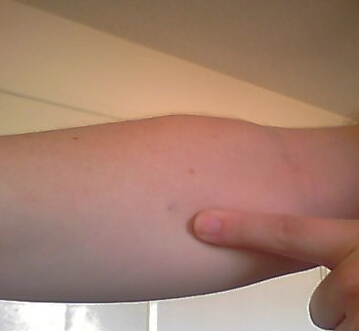Tuberculosis, or simply TB, is an infectious disease caused by diverse strains of mycobacteria - Mycobacterium Tuberculosis. To test whether you have been exposed to the TB bacteria, a tuberculin skin test is done to reveal positive vs negative TB test results. The test involves putting a negligible amount of purified protein derivative (PPD) of TB under your skin’s top layer on your forearm. Should you have been exposed to TB bacteria, you will develop a red bump at the injected site within 2 days. While this test is effective, it cannot determine how long you’ve been infected with tuberculosis or whether the infection is active.
What Are Positive vs Negative TB Test Results Like and Their Meanings
Negative Results

When you get a negative reaction after the test, it means that you haven’t been infected by the TB-causing bacteria at any point in your life. If the test turns out negative, you will experience a very small swelling or none at all. Measurements vary for children, HIV victims and other high-risk groups.
The PPD skin test is not foolproof. There are some people who have the bacteria but do not experience any reaction after the test. Any medicine or disease that weakens the immune system might lead to a false-negative result.
Positive Results

After taking TB test, the results might come back positive. This means that you have been infected with the TB-causing bacteria. While the disease may not be active, you might need treatment to prevent a recurrence. More tests should be done to confirm whether the TB is active.
≥ 5mm swelling at the test site is considered positive in:
- HIV patients
- Organ transplant beneficiaries
- Those with suppressed immunity or undergoing steroid therapy
- Those who are in close contact with TB victims
- Those who exhibit fibrotic or nodular changes on chest x-rays
≥ 10mm swelling at test site is considered positive in:
- People who have negative test results in the past two years
- People with kidney failure, diabetes and other conditions that increase the chances of getting active TB
- Healthcare professionals
- Those who use injection drugs
- Those who have moved from countries with a high prevalence rate of TB
- Kids below the age of 4
- Minors who are in close contact with high-risk adults
- Those in group-living settings such as students, prisoners, and homeless people
≥ 15mm swelling at test site are considered positive in
- People with no known risk factors for TB
If your skin test result turns out positive, the doctor might order you an imaging test such as chest X-ray or CT scan to provide more information. If those tests confirm that you have tuberculosis, further analysis of your sputum should be done to look for the TB bacteria.
Who Should Get a TB Test?

TB is one of the most contagious diseases and also one of the greatest killers. It is only 2nd to HIV and AIDs according to the World Health Organization. If you are a healthcare professional, you should get routine screens for TB by taking the PPD skin test. You also need to take the positive vs negative TB test if:
- You have been in close contact with someone who has TB
- Your immune system is weak due to diseases or medication.
How Should I Prepare for a TB Test?
Before taking the PPD test, you should let your doctor know if:
- You’ve had an adverse reaction to the tuberculin skin test in the past
- You have TB symptoms such as coughing, sweating and unexplained weight loss
- You’ve been diagnosed with TB in the past
- You have a risk factor for TB (e.g. being around a TB patient, travelled to a country where tuberculosis is common)
- Have received a TB vaccination
- Are on medication that affects your immunity (e.g. corticosteroids)
- Have HIV
- Have a rash on the skin that might make it hard to read the test result
- You have any concerns regarding the test, its risks, or the way it’s performed
How a TB Test Is Performed
To do the positive vs negative TB test, firstly, your doctor will swab the skin on the inner side of your forearm. The doctor will then give you a shot that contains PPD under your skin’s top layer. You might feel a slight sting. A small welt or bump will appear and go away after a few hours.
To avoid confusing test results, you should pay attention to the following:
- Do not cover the test site with a tape or bandage
- Do not scratch or rub the test site
- Put a cold cloth on it if it itches
- Wash your arm and dry it gently
You must go back to see your doctor after 2 or 3 days. He/she will check whether the area where you received the shot reacted to the PPD. There is usually a negligible risk of severe swelling and redness, particularly if you have had a PPD test and you’re having it redone.
